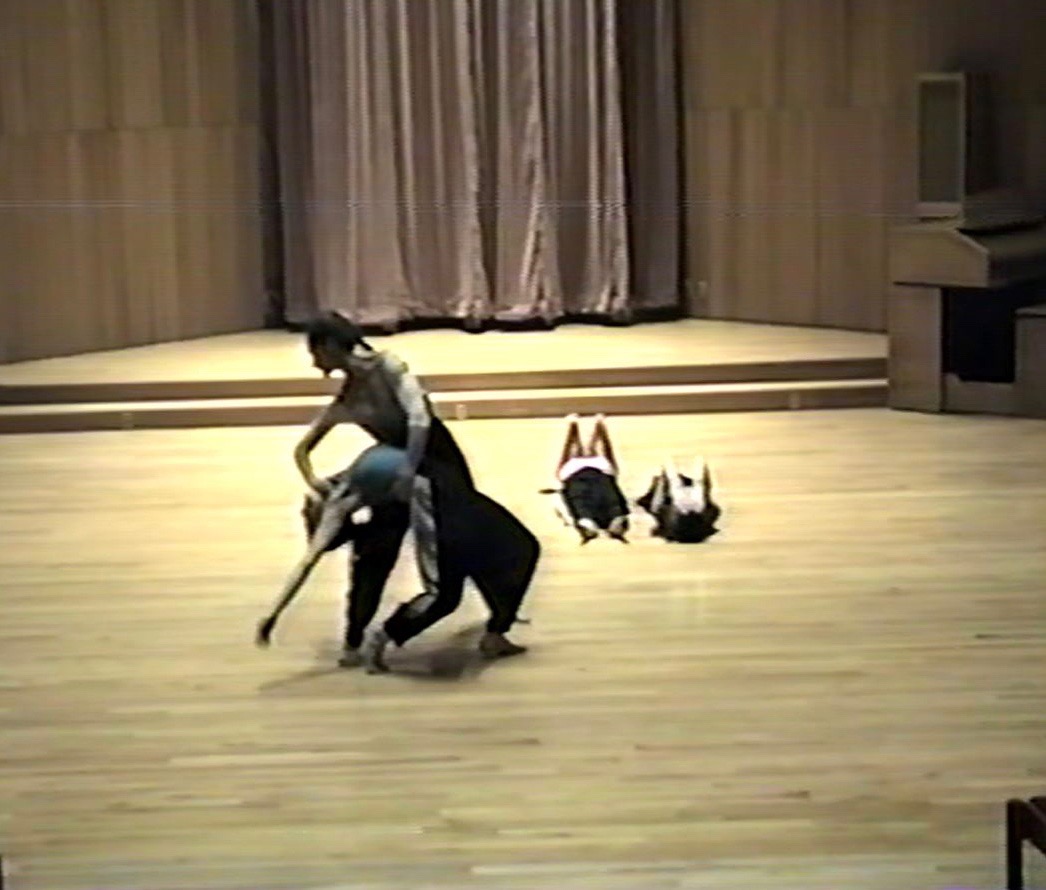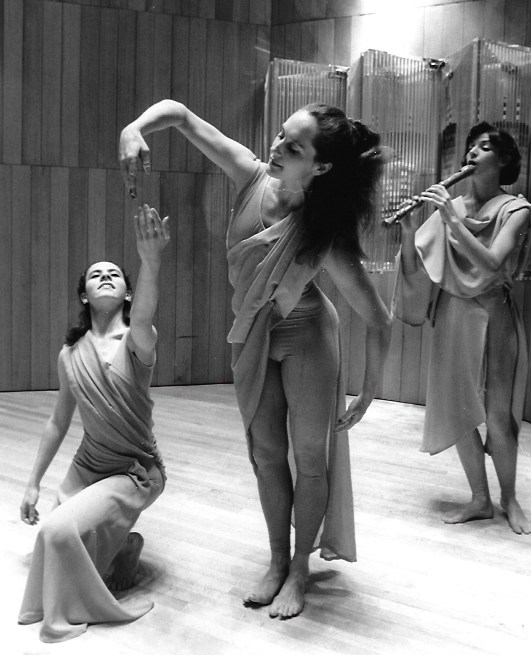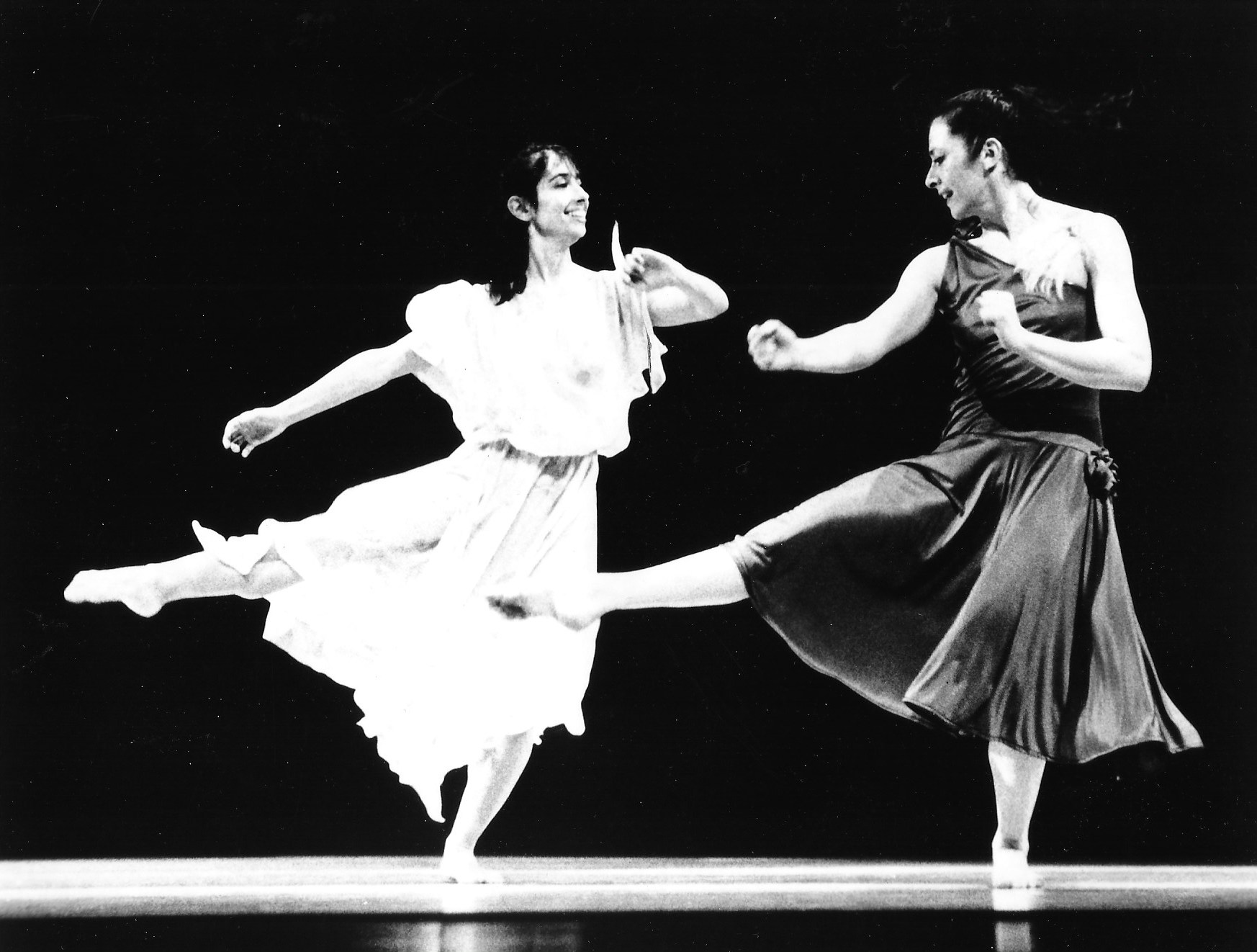I recently read Elizabeth McPherson’s book The Contributions of Martha Hill to American Dance, 1900-1995 and gained insights both into Martha Hill’s role in the history of modern dance in the United States and how she impacted my own life.

If you have been reading Mostly Dance on a regular basis you know that Elizabeth McPherson was a member of The Avodah Dance Ensemble for seven years and that recently we collaborated on a conference presentation about Helen Tamiris. Elizabeth is currently the Editor of Dance Education in Practice, a journal of the National Dance Education Organization (NDEO), and she has beautifully edited two articles that I wrote or co-authored for that publication. I feel very lucky to have two people who shared their talents first as dancers and now as valued editors in my life, Elizabeth and Kezia (editor of this blog).
Elizabeth shares in her introduction that the seeds for the book were planted at the memorial service for Hill in 1995, as Elizabeth heard the love and devotion that students of Martha Hill expressed. For her dissertation, Elizabeth decided to focus on profound and personal ways Hill had touched those around her. Elizabeth interviewed four of Hill’s students who graduated “between the years 1965 and 1975, which was one of the peak points in Hill’s career. All four students retained contact with Hill in the years following their graduation up until her death. They also remained active professionally in the dance field” (p. 2). The four dancers are Laura Glenn, Linda Kent, Dian Dong and Danny Lewis. Linda and I are close friends. I have also known Dian for a long time, because Avodah rented space from H.T. Chen & Dancers, the company and school she and her husband run in Chinatown, and we have kept in touch. Laura Glenn and Danny Lewis overlapped one of the years I was at Juilliard.
In the preface to the book, Joseph Polisi (President of Juilliard from 1984 to 2017) puts Elizabeth and her work in an excellent perspective:
Elizabeth McPherson, scholar and Juilliard dance alumna, has provided an insightful biography of Martha Hill that gives appropriate credit to the work that she realized as one of the unsung heroes in contemporary dance in America in the twentieth century. Not only is Martha’s life thoroughly explored in this work, but McPherson also provides an intriguing overview of dance in 20th century American higher education that describes the context within which Martha Hill worked. A meaningful and touching view of Martha as seen through “the eyes of her students” adds immeasurably to understanding the person behind the legacy. (p. ii)
The first chapter is an overview of the history of dance in higher education in the United States. Elizabeth points out that from 1914 to 1932, “a free and creative form of dance, a precursor to modern dance, began to take root in the physical education departments of many colleges and universities” (p. 6).
I have long been a fan of Margaret H’Doubler’s writing in dance education, having used her analysis in many teaching workshops, so it was of particular interest to learn that in 1923 H’Doubler created a dance minor at the University of Wisconsin at Madison in the Physical Education Department. It became a major with students in 1927, and a Master’s degree soon followed.
The relationship of Hill to three then-developing dance departments that I respect highly is discussed in full: New York University, Bennington College and Juilliard. Also discussed is The Connecticut College School of the Dance/American Dance Festival which grew out of the Bennington summer program that ran from 1934–1942 and which was “Hill’s vision, building her status as a giant in dance education.”
I attended two summers of The American Dance Festival at Connecticut College in New London, Connecticut, and both were life changing. Although Martha Hill was no longer director, and – as Elizabeth points out in her book – Hill was either listed as “on leave” or “advisor,” it was during the summer of 1960 that Martha Hill had a profound influence on my life. The following summer it was Louis Horst who influenced me. I don’t think I fully appreciated that until I read this book.
I auditioned for Juilliard in the spring of 1960 but didn’t get in. I knew dance was what I wanted, and while I wasn’t due to graduate until February of 1961, I learned I had enough credits that if I doubled in English I could graduate in June. I knew Juilliard was where I wanted to go and I hadn’t spent much time focusing on other alternatives. As my backup I had applied and gotten into University of Denver. It only had a dance minor, but I thought I might like the school because I had had such a positive experience at Perry-Mansfield and fallen in love with the Colorado Rocky Mountains.
At any rate, I’d gone off to Connecticut College for the summer and was loving the program. I had auditioned and gotten into a special class that Charles Weidman was teaching, which ended with a performance in one of the student showcases. I remember we were going across the floor with a combination of his when I looked up and saw Martha Hill in the balcony watching class. After class she came downstairs and found me and said something like, “You know dear, Juilliard is having an audition at the end of August for additional students for the fall class and if you audition again you will get in.” I thanked her for the information and planned on discussing this with my parents as soon as I got home, which would be in just a few days.
However, by the time I got home, my maternal grandmother had died and so the emotions and energy just weren’t right for me to say anything or change the plans that were already in motion. So a few weeks later, instead of re-auditioning for Juilliard, I was off to the University of Denver. Well… I lasted only about two weeks. After my first class with the head of the dance program, I called home. I told my parents about my brief conversation with Martha Hill, and that the University of Denver was not what I wanted and that I was not staying. I was very definite about that and that I needed to be in New York, if not at Juilliard (because the fall semester had already begun), then taking appropriate classes at the Graham Studio and some strong ballet classes. They agreed that I could come home and that we would figure New York out. How I soon got to New York will be the next blog, but for now I just want to say that Martha Hill’s encouragement was what pushed me to not settle for staying at a place that I knew in my gut wasn’t the right place for me.
Now back to historical insights from Elizabeth’s book. I loved learning that although Martha Hill was a dancer briefly in the Martha Graham company, it was really her behind-the-scenes role in bringing the early creative talents of modern dance to places like Bennington that shaped modern dance in the United States. The faculties she brought together gave modern dancers like Graham, Humphrey, Weidman and Limon places to work, rehearse and create their legendary repertory.
I also found it fascinating to read about how she and William Schuman, President of Juilliard in 1951, founded the Juilliard Dance Department “upon the idea of the integration of the two forms of ballet and modern dance. Up to this time dancers had primarily studied ballet or modern” (p. 57). I really admired Martha Hill’s drive in making sure that the dance department remained a part of Juilliard in the school’s move to Lincoln Center.
A definite highlight was reading the four sections on Martha Hill through the eyes of her students. This book is a must-read for anyone interested in the history of modern dance in the United States and how dance programs developed in U.S. colleges and universities. Thank you, Elizabeth.
Here’s a link to where you can order a copy. I was able to buy a used book for under $10 but that is not the case now.
[print_link]


















